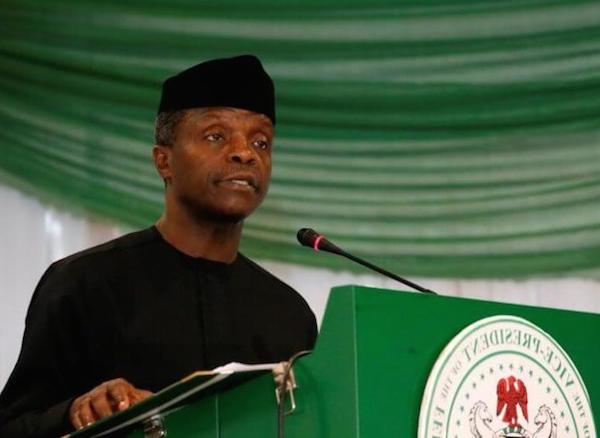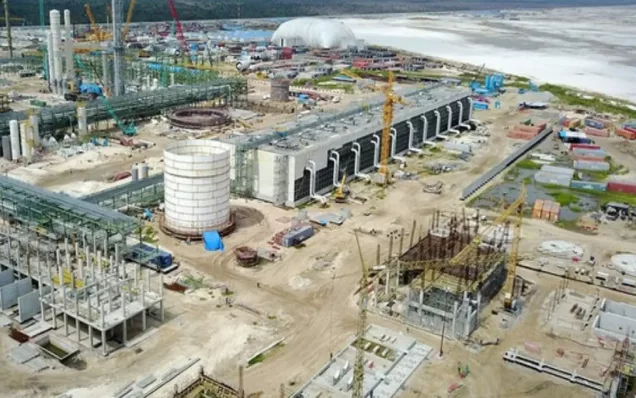Nigeria’s Vice President Yemi Osinbajo says the Federal Government’s power sector reforms are already yielding results as steady progress is being recorded in power generation, transmission and distribution capacities on the national grid.
Osinbajo’s spokesman, Laolu Akande, in a statement in Abuja, said the vice president spoke at the commissioning of the 2x60MVA, 132/33KV substation and associated 132KV transmission lines in Abeokuta, Ogun State on Thursday.
The substation and transmission lines were built by the Niger Delta Power Holding Company (NDHPC) and the Transmission Company of Nigeria (TCN).
“This commissioning is an important part of the President Muhammadu Buhari administration’s efforts to improve the supply and quality of power reaching the homes and businesses of Nigerians.
“Today we have 13,427 MW of installed capacity, and an available capacity of 8,342MW. This was achieved through the efforts of government’s private sector partners in the rehabilitation/commissioning of turbines in Shiroro, Egbin, Delta Power, Sapele and Gbarain.
“Before the end of the year, new generation is expected from: Gbarain (Extra 115 MW); Kashimbilla (40 MW); Afam III Fast Power (240 MW); Gurara (30 MW); Dadin Kowa (29 MW); and Kaduna (215 MW).
“In the long term, several solar plants will come on stream; the national grid, has the capacity to transmit 7,000 MW an increase from less than 5,000MW in 2015, this is due to the completion of several transmission projects like the Ikot Ekpene switching station and the completion of the Ikot Ekpene-Ugwuaji-Makurdi-Jos loop done by the (NDPHC) in 2017.”
Osinbajo said distribution capacity in the 11 Distribution Companies also known as DisCos were significantly low; hovering at around 4,000MW on average with a peak of about 5,400MW.
He said that despite the availability of 8,000MW of generation and 7,000MW of transmission capacity, lack of DisCo infrastructure to absorb and deliver grid power to end users had largely restricted generation to an average of about 4,000MW.
Osinbajo said that part of the lack of infrastructure was the inability of discos to provide meters to consumers.
He said that in resolving the issue, government stepped in through NERC’s Meter Asset Provider (MAP) Regulation of 2018.
On the Federal Government’s strategy that has improved generation and transmission capacities, Osinbajo said after a thorough assessment of the sector, it was evident that the current system needed serious adjustment to yield the desired results.
“It is evident that the structure of the market today cannot deliver on the government’s promises for power for domestic and industrial use; a substantial change of strategy is being pursued.
“First is the Siemens phased electrification roadmap to deploy financing and technology on commercial terms agreed with transmission and distribution companies in partnership with the German Government and Siemens.
“In Phase 1, to increase transmission and distribution capacity to enable power delivery of 7,000 MW to consumers; (in Phase 2) eliminate bottlenecks in transmission and distribution to enable full utilization of existing generation for power deliver of 11,000 MW to consumers; and(in Phase 3) upgrade and expand generation, transmission and distribution for end-to-end power delivery of 25,000 MW.
“Second is the opening up of the market to new investors in generation, transmission and distribution infrastructure transacting directly with each other to serve willing customers including deploying off-grid power and using micro-grids, especially for deployment of solar power.
“We have successfully done this in Sabongari Market Kano, Ariaria Market in Aba and recently we launched the first of several solar power plants in Universities with the 2.8MW plant at the Alex Ekwueme Federal University in Ebonyi State.
“Over the course of the next few months, the Federal University of Petroleum Resources, Effrun Delta and Bayero University, Kano State will have their off-grid Solar Hybrid systems commissioned,” he said.














